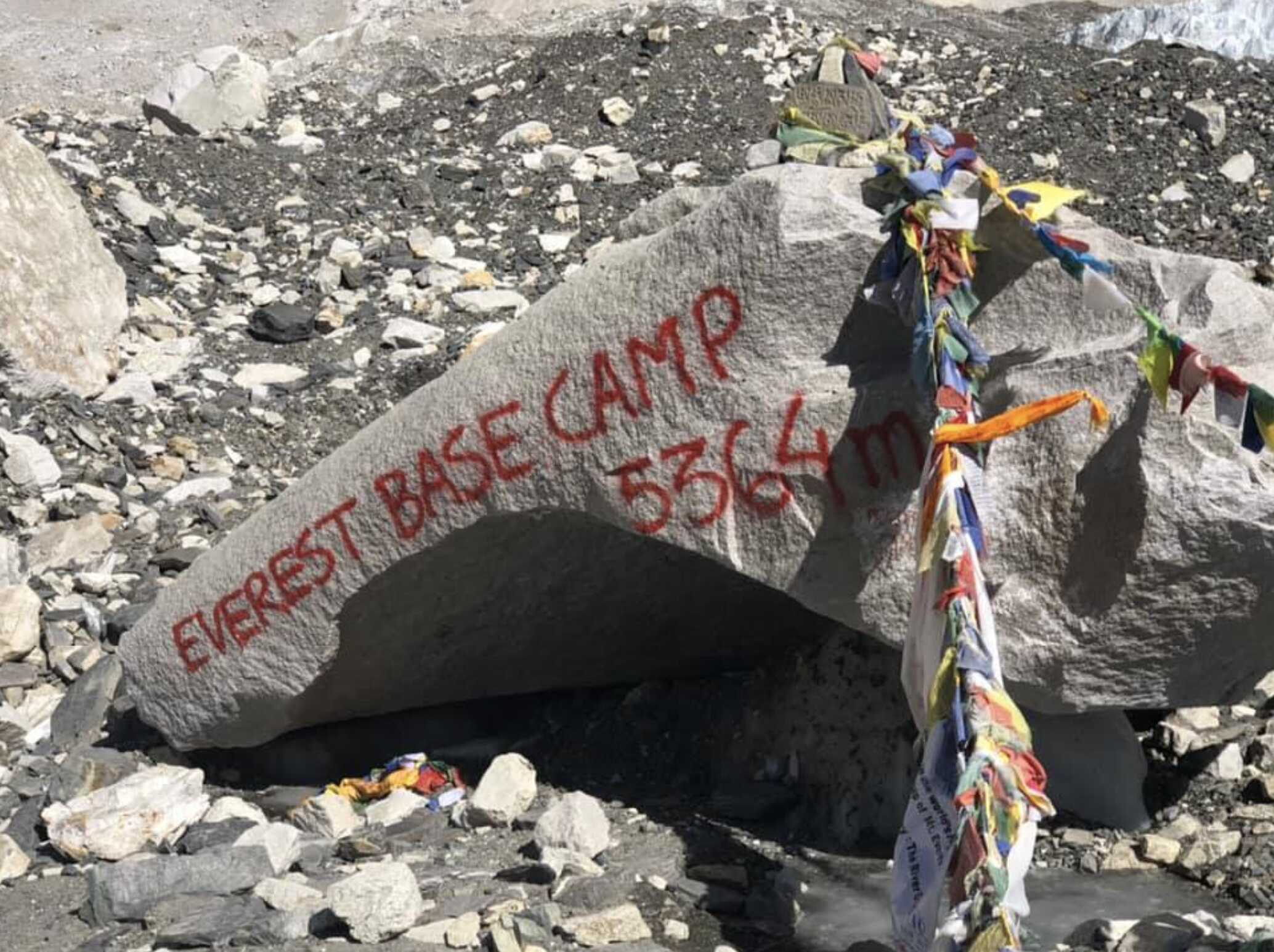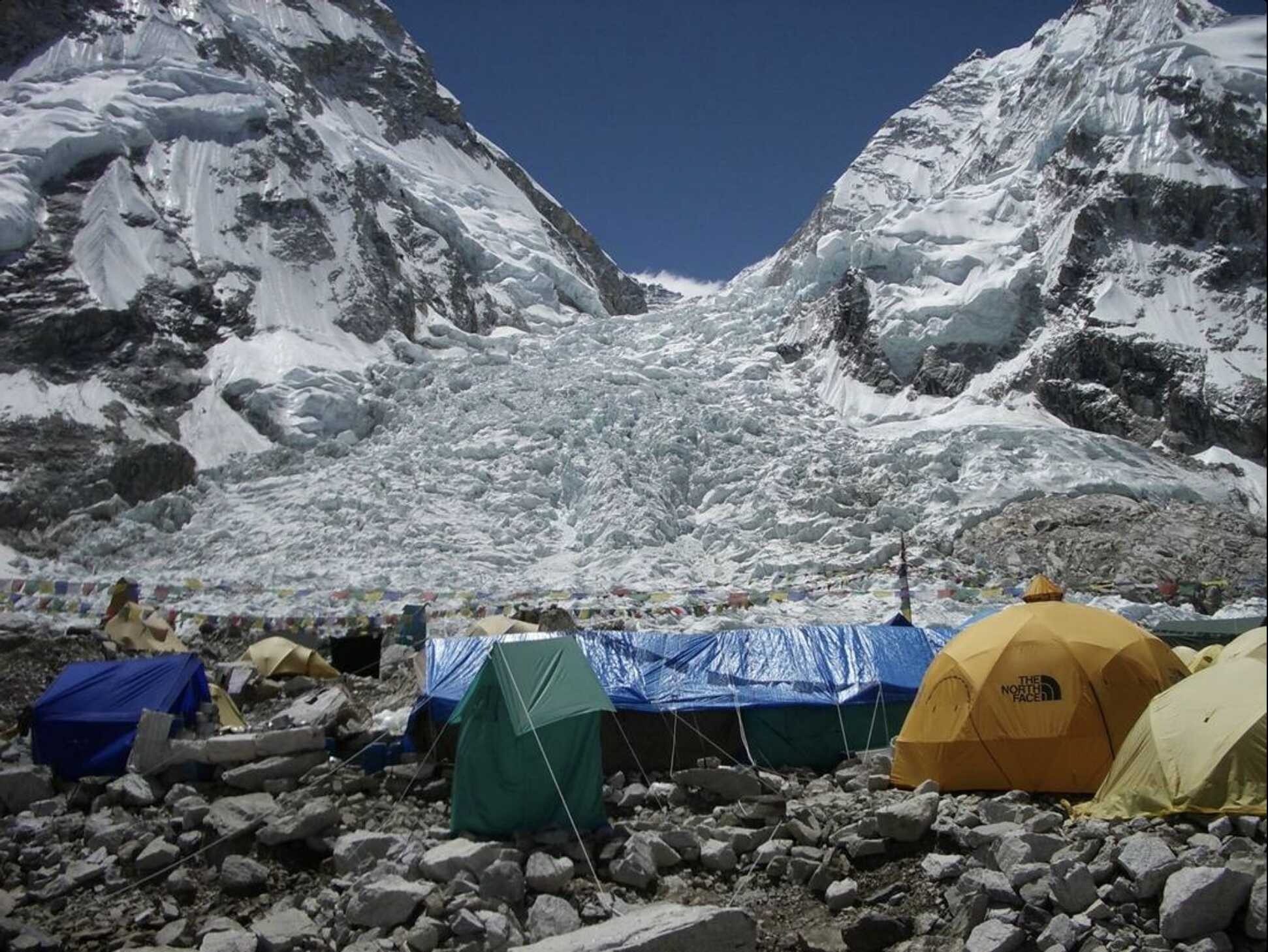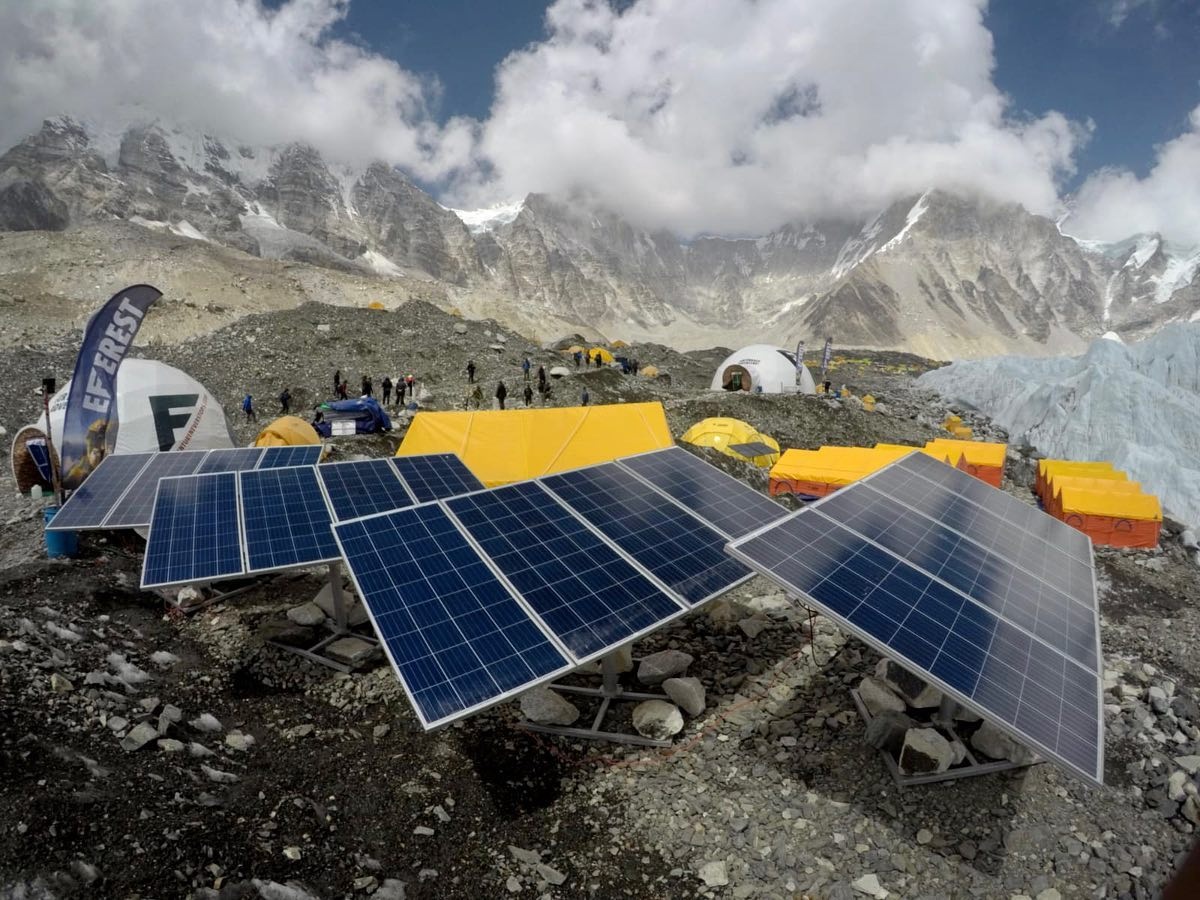The Debate Surrounding Whether Everest Base Camp Should Be Moved Rumbles On
Six months after the tourism officials in Nepal announced they would study the possibility of moving Everest Base Camp from the toe of the melting Khumbu Glacier, there still appears to be no consensus on the issue.
While the climbing season of the world's highest peak is just four months away, officials told the BBC they would not move Base Camp before the start of the 2024 climbing season.
"We are now preparing for the relocation, and we will soon begin consultation with all stakeholders," said Taranath Adhikari, director general of Nepal's tourism department. "It is basically about adapting to the changes we are seeing at the base camp, and it has become essential for the sustainability of the mountaineering business itself."
The camp is currently located at 5,380 metres (17,650 feet) in elevation, with officials eyeing two potential sites 200 to 400 metres (660 to 1,300 feet) lower.
This would increase the distance to the point at which crampons are required to continue climbing the mountain (6,600 metres/21,650 feet) by 2.4 kilometres (1.5 miles) and 7.5 kilometres (4.7 miles) one way, respectively.
Despite reports of the stream that runs through Base Camp swelling in recent years and crevasses opening on the glacier in the camp, critics and proponents of the plan insist base camp remains the safest place on the mountain.
Moving EBC As a Forward-Looking Decision

Dawa Steven, chief executive of Asian Trekking and a member of the committee studying the relocation possibilities, told Explorers Web the decision to move base camp was a forward-looking one and not a knee-jerk response to current evidence of warming.
"Base Camp and the Khumbu Glacier on which it sits is no more unstable than in the past," he said. "There certainly are no cavities under the ice that could swallow up Base Camp or pose a threat to anyone's life. Also, no crevasses are suddenly ripping open overnight to devour tents."
He added that Base Camp's location remained the most shielded place from avalanches to live and sleep while climbing the mountain.
Authorities have said Base Camp must be moved to reduce pollution from climbers and improve safety.
There is also a. concern that as the number of people flocking to Everest each year increases, Base Camp will expand to less stable parts of the glacier that are more prone to avalanches or rockfall.
However, Lukas Furtenbach, the owner of Furtenbach Adventures, told ExpedReview that he does not think there is an immediate need to move Base Camp.
"I don't see an immediate problem with the increased melting on the Khumbu glacier, except that the campsites (platforms) need more maintenance work during the season," he said. "In the past, we have seen that not all of the area where modern basecamp stretches is safe. Some areas are exposed to gravitational mass movement and avalanches from surrounding terrain."
"So, with so many people (2,000+) in this area every year for 2+ months, I would commission a risk analysis with international experts if I were the responsible person in the Nepalese government," Furtenbach added. "Maybe I am wrong, but I am not aware of an assessment of a proven, recognized expert so far. So any decision taken without that would be a gut decision."
Nepalese officials should concentrate on other projects

Other critics argued that moving Base Camp would be counter-productive and less effective than other measures that the government is not taking, such as establishing minimum qualifications for guides and climbers, limiting the number of permits and requiring all solid human waste to be removed from all camps on the mountain.
Kami Rita Sherpa, who has been climbing Everest for more than 20 years, told The Third Pole that moving the Base Camp would create chaos.
"If you move Base Camp lower, say to Gorak Shep (5,150 metres/17,000 feet), then it will just be a stopover before the current base camp, as it's nearly impossible to hike from the moved Base Camp to Camp I," he said.
"And you can't stay anywhere in between, as there isn't any suitable spot except the current base camp. It will be just an added camp, not an alternative," Kami Rita added.
Furtenbach agreed that some operators would likely establish an advanced base camp at the site of the current base camp due to the significant increase in distance and elevation that moving the camp would add to the acclimatisation process.
"The climb to C1 will be longer, depending on where they plan the new EBC location," he said. "For some people, maybe too long. These people will need an interim camp. And where could that be? Definitely not in the Khumbu Icefall. At the site of the original EBC."
However, he added that the decision would not impact his Everest climbing offerings due to Furtenbach Adventures' strict fitness requirements.
There is additional skepticism about whether a decision to move Base Camp could even be enforced if it were legislated in Kathmandu.

Instead, Kami Rita said government investment in infrastructure at Base Camp would have a far greater impact. He said electrifying Base Camp would eliminate the need for cooking gas, the use of which some studies have demonstrated is causing the Khumbu Valley to warm far faster than its peers.
Additionally, establishing semi-permanent toilets would reduce pollution from human waste and eliminate the unpleasant job of porters taking the blue barrels currently used as toilets down the mountain to designated dumping sites.
No easy answers
Two potential workarounds to prevent the establishment of a permanent advanced base camp at the site of the current Base Camp are using helicopters to haul gear to Camp II and a new route up Everest that avoids the Khumbu Glacier.
However, both of these come with drawbacks. While the use of helicopters would make the loads carried along the elongated hike from the new Base Camp to Camp I lighter and easier, it would exacerbate the issue of climate change in the Himalayas and make the trips more expensive.
Additionally, the potential new route proposed by famed French mountaineer Marc Batard has drawn plenty of skepticism as being more technically challenging and prone to avalanches than the traditional route through the Khumbu Icefall.
Kami Rita warned that solutions that make climbing Everest in Nepal longer and more expensive might lead interested parties to climb from China via the Northeast Ridge, which is shorter and boasts far superior support infrastructure.
However, Furtenbach said he doubts moving Base Camp would result in more people deciding to climb from China. "No, I don't see that since China is strictly limiting the amount of permits and the operators,” he said.
Ultimately, Dewa Steven suggested that Everest may be approaching a pivotal moment: should the world's highest mountain be further commercialized and increasingly accessible to less experienced climbers or remain the domain of elite alpinists, climbing the mountain on its own terms?